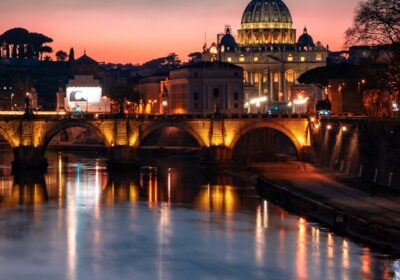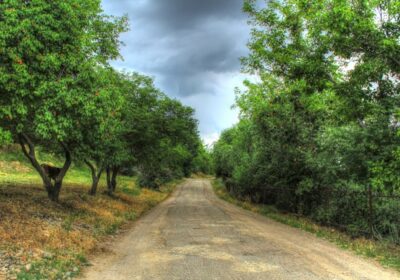Discovering Spain: A Journey Through Vibrant Culture and Diverse Landscapes
Spain is a country that enchants travelers with its vibrant culture, rich history, and stunning landscapes. From the bustling streets of Madrid and Barcelona to the serene beaches of Costa del Sol and the historic charm of Andalusia, Spain offers a wide range of experiences for every type of traveler. This guide will take you through some of the must-visit destinations, cultural highlights, and essential travel tips to help you make the most of your trip to Spain.
Must-Visit Destinations
1. Madrid: The capital city of Spain, Madrid, is known for its lively atmosphere, world-class museums, and royal palaces. Key attractions include the Prado Museum, the Royal Palace, and the bustling Puerta del Sol. Enjoy a leisurely stroll through Retiro Park and savor tapas in the La Latina neighborhood.
2. Barcelona: Located in Catalonia, Barcelona is famous for its unique architecture, vibrant nightlife, and beautiful beaches. Visit the iconic Sagrada Família, Park Güell, and the Gothic Quarter. Stroll down La Rambla and relax on the beaches of Barceloneta.
3. Seville: The capital of Andalusia, Seville, is known for its flamenco dancing, Moorish architecture, and historic landmarks. Explore the Alcázar palace, the Seville Cathedral, and the Plaza de España. The Santa Cruz neighborhood is perfect for wandering through narrow streets lined with orange trees.
4. Granada: Home to the stunning Alhambra, a palace and fortress complex, Granada is a city steeped in history. The Albayzín district offers breathtaking views of the Alhambra and the Sierra Nevada mountains. Don’t miss the chance to experience a traditional tea house.
5. Valencia: Known for its futuristic architecture and delicious cuisine, Valencia is a city that combines the old with the new. Visit the City of Arts and Sciences, the historic Silk Exchange (La Lonja), and the beautiful Turia Gardens. Valencia is also the birthplace of paella, a must-try dish.
6. Bilbao: Located in the Basque Country, Bilbao is known for its modern architecture and vibrant cultural scene. The Guggenheim Museum, designed by Frank Gehry, is a major attraction. The Old Town (Casco Viejo) offers charming streets and traditional Basque cuisine.
7. Costa del Sol: This sunny region on the southern coast of Spain is famous for its beautiful beaches and luxury resorts. Marbella, Málaga, and Torremolinos are popular destinations. Enjoy water sports, golf, and the lively nightlife along the coast.
Cultural Highlights
1. Art and Museums: Spain is home to some of the world’s most famous art museums. The Prado Museum in Madrid, the Guggenheim Museum in Bilbao, and the Picasso Museum in Barcelona are must-visit sites for art lovers. Spain’s cultural heritage is also showcased in smaller, regional museums.
2. Historic Landmarks: From the Roman aqueduct in Segovia to the medieval walls of Ávila, Spain is dotted with historic landmarks that tell the story of its rich past. The Mezquita in Córdoba and the cathedral of Santiago de Compostela are also notable sites.
3. Festivals and Events: Spain is renowned for its lively festivals and events. La Tomatina in Buñol, the Running of the Bulls in Pamplona, and the Feria de Abril in Seville are just a few of the country’s famous celebrations. Each region has its own unique festivals and traditions.
4. Culinary Delights: Spanish cuisine is diverse and flavorful. Enjoy tapas, churros with chocolate, and fresh seafood along the coast. Each region has its specialties, such as Basque pintxos, Andalusian gazpacho, and Catalan crema catalana. Pair your meals with Spanish wines or a refreshing glass of sangria.
Travel Tips
1. Language: While Spanish (Castilian) is the official language, regional languages such as Catalan, Basque, and Galician are also spoken. English is widely understood in tourist areas. Learning a few basic Spanish phrases can enhance your travel experience.
2. Transportation: Spain has an extensive public transportation system, including high-speed trains (AVE), regional trains, and a network of buses. Renting a car is a good option for exploring rural areas and the scenic countryside.
3. Currency: The currency in Spain is the Euro (€). Credit and debit cards are widely accepted, but it’s advisable to carry some cash for small purchases and in rural areas.
4. Weather: Spain has a varied climate with mild winters and hot summers in most regions. The best time to visit depends on your destination and interests. Spring (April to June) and autumn (September to October) are generally pleasant and less crowded.
5. Accommodation: Spain offers a wide range of accommodation options, from luxury hotels and boutique B&Bs to budget hostels and rural casas rurales. Booking in advance is recommended, especially during major events and festivals.
Conclusion
Spain is a country that offers a feast for the senses, with its vibrant culture, rich history, and stunning landscapes. Whether you’re exploring the historic streets of Seville, savoring the culinary delights of Barcelona, or relaxing on the sunny beaches of Costa del Sol, Spain promises a journey filled with unforgettable experiences. Embrace the culture, indulge in the cuisine, and discover the history that makes Spain a unique and captivating travel destination.






Leave feedback about this